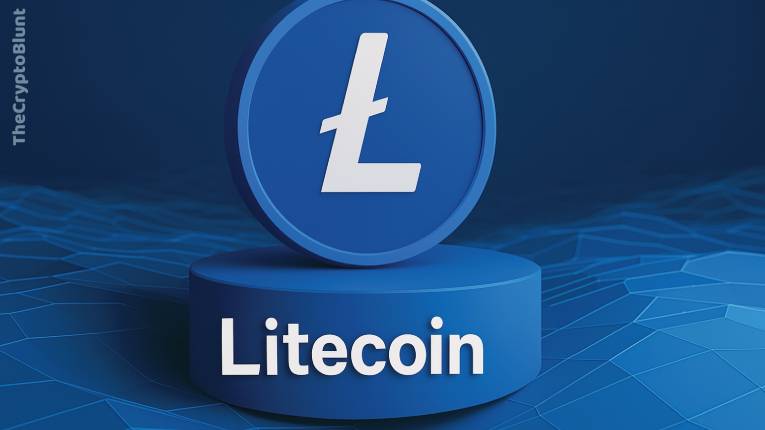When I first dipped my toes into the vast ocean of cryptocurrencies, Bitcoin was the undeniable king, dominating headlines and conversationsWhile the two share a foundational lineage, Litecoin, with its native cryptocurrency LTC, carved out its own niche, aiming to be a faster, more accessible, and everyday version of its digital predecessor.
Litecoin has long been hailed as the “silver to Bitcoin’s gold,” a complementary digital asset designed for more frequent, smaller transactions. It embodies the spirit of open-source innovation, building upon Bitcoin’s robust foundation while introducing key modifications to enhance speed and accessibility. From its unique mining algorithm to its faster block times and recent privacy enhancements, Litecoin has continuously evolved to maintain its relevance in a rapidly changing technological landscape.
In this comprehensive guide, tailored for absolute beginners, we’ll embark on a journey to understand Litecoin. We’ll delve into its fascinating past, meet its visionary founder, explore its diverse real-world applications (from global payments to enabling new privacy features), and look into its promising future. Along the way, we’ll clarify essential crypto concepts and tackle common misconceptions, ensuring you gain a clear, accurate, and trustworthy understanding of this pioneering digital asset.
Your Crypto Compass: Navigating the Basics
To truly grasp Litecoin’s unique position, let’s first establish a foundational understanding of some essential terms that are critical for navigating the broader cryptocurrency and distributed ledger technology (DLT) landscape.
- Cryptocurrency: At its core, a cryptocurrency is a digital or virtual currency designed to work as a medium of exchange. Unlike traditional currencies like the Indian Rupee, which are controlled by a central authority (e.g., the Reserve Bank of India), cryptocurrencies use strong cryptography to secure transactions and verify asset transfers. They are often, though not always, decentralized, meaning no single entity issues or controls them. LTC is Litecoin’s native cryptocurrency.
- Blockchain: Imagine a public, immutable digital ledger that records all transactions. This ledger is made up of “blocks” of information, and each block is linked securely to the one before it, forming a “chain. Once a transaction is recorded on the blockchain, it cannot be altered or removed. This distributed and transparent nature is what makes blockchain technology so revolutionary. Both Bitcoin and Litecoin operate on their own respective blockchains.
- Distributed Ledger Technology (DLT): This is a broader term than blockchain. A DLT is a decentralized database managed by multiple participants, where each participant maintains a copy of the ledger. Blockchain is a type of DLT. The key difference lies in how data is structured and how consensus is reached.
- Decentralization: This is a fundamental principle in the crypto and DLT world. It means that power and control are distributed across a network of participants rather than being held by a single, central entity (like a bank or government). This aims to create systems that are more resilient to censorship, manipulation, and single points of failure. Litecoin, like Bitcoin, strives for decentralization through its open-source nature and Proof-of-Work mining.
- Consensus Mechanism: This is the method by which all participants in a distributed network agree on the validity of transactions and the current state of the ledger. Different DLTs use different consensus mechanisms. Litecoin, like Bitcoin, uses Proof-of-Work (PoW).
- Mining (Proof-of-Work – PoW): This is how both Bitcoin and Litecoin networks are secured. Powerful computers (called “miners”) compete to solve complex mathematical puzzles. The first miner to solve the puzzle gets to add the next “block” of verified transactions to the blockchain and is rewarded with newly minted cryptocurrency (e.g., LTC for Litecoin) and transaction fees. This process, while energy-intensive for some cryptocurrencies, ensures the network’s security and integrity. Litecoin uses a specific PoW algorithm called Scrypt, which differs from Bitcoin’s SHA-256.
- Halving: A pre-programmed event within the code of many cryptocurrencies, including Bitcoin and Litecoin, where the reward for mining new blocks is cut in half. This occurs at regular intervals (e.g., every four years for Litecoin), reducing the rate at which new coins are introduced into circulation and contributing to their scarcity. Litecoin’s most recent halving occurred in August 2023.
- Open Source: This means the underlying code of Litecoin is publicly available for anyone to view, audit, and contribute to. This transparency is a cornerstone of trust and community-driven development in the crypto space.
- Fungibility: In currency, fungibility means that each unit is interchangeable with another identical unit. For example, one 100 Rupee note is fungible with another 100 Rupee note. In the digital world, some cryptocurrencies are inherently fungible. Litecoin’s recent MimbleWimble Extension Blocks (MWEB) upgrade aims to enhance its fungibility by introducing optional privacy features, making transactions more difficult to trace.
The Genesis of Litecoin: A Vision of “Silver”
The story of Litecoin begins with a desire to build upon the groundbreaking innovations of Bitcoin, refining its design to serve as a more practical, everyday digital currency.
The Visionary: Charlie Lee
The creator of Litecoin is Charlie Lee. A former Google engineer, Lee (who goes by “SatoshiLite” on Twitter, a nod to Bitcoin’s anonymous creator, Satoshi Nakamoto) was an early and keen observer of Bitcoin. He recognized its revolutionary potential but also identified areas where its design could be adapted to facilitate faster, cheaper transactions for everyday use.
Lee’s vision was not to compete with Bitcoin directly as a store of value, but rather to complement it. If Bitcoin was “digital gold” – a valuable asset for long-term holding and larger transfers – then Litecoin would be “digital silver” – suitable for quicker, smaller transactions and wider adoption in daily commerce.
The Birth of a “Fork” (Kind Of)
Litecoin was released via an open-source client on GitHub on October 7, 2011, and its network officially went live on October 13, 2011.
While often referred to as a “fork” of Bitcoin, it’s more accurate to say that Litecoin was created from a copy of Bitcoin’s source code. This means it started with the fundamental principles and code structure of Bitcoin but introduced several key modifications from its very inception:
- Faster Block Generation Time: Bitcoin aims for a new block every 10 minutes. Charlie Lee designed Litecoin to generate a new block every 2.5 minutes. This four-fold increase in block speed was intended to lead to faster transaction confirmations, making Litecoin more suitable for point-of-sale transactions.
- Increased Maximum Supply: Bitcoin has a hard cap of 21 million coins. To accommodate its vision of a more widely circulated currency, Litecoin’s maximum supply was set at 84 million coins, exactly four times that of Bitcoin.
- Different Hashing Algorithm (Scrypt): This is one of the most significant technical differences.
- Bitcoin uses SHA-256. At the time Litecoin was created, Bitcoin mining was becoming increasingly dominated by specialized, expensive hardware called ASICs (Application-Specific Integrated Circuits). These machines were designed solely to perform SHA-256 calculations efficiently, making it difficult for average users with CPUs (Central Processing Units) or GPUs (Graphics Processing Units) to compete profitably.
- Litecoin adopted Scrypt. Charlie Lee chose the Scrypt algorithm specifically because it was “memory-hard.” This meant that performing Scrypt calculations efficiently required a lot of RAM (memory) rather than just raw processing power. The idea was to make Litecoin mining more accessible to individuals using consumer-grade computers (CPUs and GPUs), thus fostering greater decentralization among miners and preventing the early dominance of ASICs. While ASICs for Scrypt have since been developed, the initial aim was to level the playing field.
- Faster Difficulty Retarget: The difficulty of mining adjusts to ensure that blocks are found at the target time (2.5 minutes for Litecoin). Litecoin’s difficulty adjustment mechanism was designed to be more frequent than Bitcoin’s, allowing it to adapt more quickly to changes in network hash rate.
Early Growth and “Merge Mining”
Litecoin quickly gained traction in the nascent crypto community, benefiting from its “silver to Bitcoin’s gold” narrative. Its increasing availability on early exchanges like BTC-e fueled its growth. In November 2013, Litecoin experienced a significant price surge, a testament to its growing popularity.
A notable development in Litecoin’s history was the implementation of merge mining with Dogecoin in September 2014. Merge mining allows miners to mine two different cryptocurrencies simultaneously with the same hashing power, as long as both cryptocurrencies use the same Proof-of-Work algorithm (in this case, Scrypt). This was a mutually beneficial arrangement, providing Dogecoin with increased security and Litecoin miners with additional rewards.
The Journey Continues: SegWit and MWEB
Litecoin has often served as a testbed for Bitcoin’s technological upgrades due to their similar codebase. One significant example is the adoption of Segregated Witness (SegWit). SegWit is a soft fork (a backward-compatible upgrade) that separates transaction signatures from the transaction data, leading to:
- Increased Block Capacity: Allows more transactions to fit into each block.
- Improved Transaction Malleability: Fixes a bug that allowed transaction IDs to be changed before confirmation.
Litecoin implemented SegWit in May 2017, preceding Bitcoin’s adoption of the technology. This demonstrated Litecoin’s agility and willingness to innovate.
Most recently, in May 2022, Litecoin activated the MimbleWimble Extension Blocks (MWEB) upgrade via a soft fork. This significant development introduced optional privacy features, allowing users to send confidential transactions where the amount and recipient are known only to the sender and receiver. This was a major step towards enhancing Litecoin’s fungibility and privacy, setting it apart from Bitcoin in this regard.
From its origins as a Bitcoin spin-off to its role as an innovator and a complementary digital asset, Litecoin’s history is one of continuous adaptation and a persistent focus on its core mission: to provide a fast, secure, and accessible cryptocurrency for everyday transactions.
Dispelling the Myths: Addressing Common Crypto Misconceptions
The world of Litecoin, like the broader cryptocurrency ecosystem, is often shrouded in misconceptions. Let’s tackle some of these prevalent myths head-on to provide a clearer, more factual understanding.
- “Litecoin is just a copy of Bitcoin, and all crypto is a scam or only for criminals.”
- Reality: While Litecoin was derived from Bitcoin’s codebase, it introduced fundamental changes (Scrypt algorithm, faster block times, higher supply, MWEB privacy) that give it distinct characteristics and use cases. It’s not a mere copy but an optimized version for specific purposes. As for the “scam” and “criminal” myths, these are broad mischaracterizations.
- Context: Like any technology, cryptocurrencies can be misused. However, the vast majority of crypto transactions are legitimate. Litecoin, as an open-source project, operates on a transparent and immutable public ledger (the blockchain). While MWEB offers optional privacy, it doesn’t make transactions untraceable by law enforcement with proper tools and authority. The transparency of the base layer means every LTC transaction is visible on the blockchain, traceable by anyone. The notion that “all crypto is a scam” ignores the genuine innovation, utility, and financial inclusion that projects like Litecoin aim to provide.
- “Litecoin (and crypto in general) is bad for the environment because of ‘mining’.”
- Reality: This concern primarily applies to Proof-of-Work (PoW) cryptocurrencies, including Litecoin and Bitcoin, as mining consumes energy. However, the narrative often oversimplifies the nuances.
- Context: While PoW mining consumes electricity, it’s crucial for securing these decentralized networks. The energy consumption argument often ignores the energy used by traditional financial systems (banks, ATMs, data centers) or the fact that a significant and growing portion of crypto mining now utilizes renewable energy sources. Furthermore, Litecoin’s Scrypt algorithm, while still PoW, was initially designed to be less susceptible to the energy-intensive ASICs that dominate Bitcoin mining (though ASICs for Scrypt exist now, they are generally less energy-intensive per hash than SHA-256 ASICs). The industry is continuously innovating to make mining more energy-efficient and reliant on green energy. The environmental impact is a valid concern, but it’s often presented without considering the full context or the ongoing efforts towards sustainability within the crypto space.
- “Litecoin will replace all traditional money and banks.”
- Reality: While cryptocurrencies like Litecoin offer compelling alternatives for payments and value transfer, a complete replacement of traditional financial systems is highly improbable in the near future. Coexistence and integration are far more likely.
- Context: Litecoin’s strength lies in offering faster, cheaper cross-border transactions and peer-to-peer payments, which can complement or improve upon traditional banking services. It provides financial access to unbanked populations and enables new forms of digital commerce. However, the existing financial infrastructure is deeply entrenched, heavily regulated, and serves a vast array of complex functions beyond simple transfers. Litecoin aims to provide a decentralized, open alternative for payments, not necessarily to dismantle every aspect of traditional finance. Many businesses are exploring how to integrate crypto payments alongside traditional methods, offering consumers more choice, rather than replacing them entirely.
- “Litecoin’s price is too volatile to be a real currency; it’s just for speculation.”
- Reality: Cryptocurrency markets, including Litecoin’s, are indeed known for their volatility. This is partly due to their relatively young age, smaller market caps compared to traditional assets, and speculative trading.
- Context: While volatility makes cryptocurrencies less ideal for direct everyday pricing (e.g., how much is a litre of milk in LTC today?), their utility extends beyond being a stable store of value. Litecoin’s design as a “medium of exchange” prioritizes transaction speed and low fees. Many users and businesses use it for remittances, cross-border payments, or as a quick way to transfer value before converting to fiat currency. As the crypto market matures and adoption increases, volatility may naturally decrease. Moreover, developments like stablecoins (which are pegged to fiat currencies) address the stability issue, allowing users to leverage DLT benefits without price volatility. Litecoin serves a different purpose than a stablecoin or a long-term store of value like Bitcoin; its strength lies in its transactional efficiency.
Real-World Applications and Benefits: Why Litecoin Matters
Beyond its technical specifications, Litecoin’s true impact is seen in its practical applications and the solutions it offers to everyday financial challenges. Its design as “digital silver” makes it particularly well-suited for specific use cases.
Here’s why Litecoin matters and the tangible benefits it offers:
- Fast and Low-Cost Payments:
- Problem: Traditional international payments can be slow, expensive, and involve multiple intermediaries, leading to delays and high fees. Even local digital payments sometimes face processing delays.
- Litecoin’s Solution: With a target block time of 2.5 minutes (compared to Bitcoin’s 10 minutes) and significantly lower transaction fees (often fractions of a Rupee, or typically under $0.05 USD per transaction), Litecoin is highly efficient for sending and receiving money globally.
- Benefit: Enables quicker and more affordable cross-border transactions, fostering greater financial inclusion and empowering individuals and small businesses.
- Everyday Transactions and Micro-transactions:
- Problem: Bitcoin’s increasing transaction fees and slower confirmation times (especially during peak network congestion) make it less ideal for small, daily purchases.
- Litecoin’s Solution: Litecoin’s design directly addresses this. Its faster block times mean quicker confirmations at point-of-sale, and its low fees make it economically viable for even very small payments.
- Benefit: Facilitates a more seamless and affordable experience for everyday digital commerce, making cryptocurrency more practical for retail use.
- Enhanced Privacy (with MWEB):
- Problem: Most public blockchains (including Bitcoin and the base layer of Litecoin) are pseudonymous, meaning all transactions are recorded and viewable, even if the identities of the participants are not directly linked to their addresses. This can be a concern for businesses and individuals who value financial privacy.
- Litecoin’s Solution: The MimbleWimble Extension Blocks (MWEB) upgrade introduced optional privacy features. Users can choose to send confidential transactions where the transaction amount and sender/recipient addresses are obscured, known only to the involved parties.
- Example: A business might want to keep its supply chain payments or employee salaries private from public scrutiny, while still leveraging the security of a distributed ledger. MWEB allows for this selective privacy.
- Benefit: Offers users greater control over their financial data, enhancing fungibility (as all LTC units, regardless of their transaction history, become equally untraceable when MWEB is used) and addressing privacy concerns for various use cases.
- A “Testbed” for Bitcoin Innovation:
- Problem: Implementing significant upgrades directly onto Bitcoin’s massive and valuable network is risky, requiring extensive testing and consensus.
- Litecoin’s Solution: Due to its similar codebase and established network, Litecoin has often served as a “proving ground” for new technologies that could eventually be adopted by Bitcoin.
- Example: Litecoin’s successful activation of SegWit in 2017 provided valuable real-world testing and confidence that contributed to Bitcoin’s eventual adoption of the upgrade. This indirectly benefits the entire crypto ecosystem.
- Benefit: Accelerates innovation in the broader crypto space by allowing critical upgrades to be tested and refined on a live, substantial network before being considered for the larger, more cautious Bitcoin network.
- Accessibility for Miners:
- Problem: Bitcoin mining became increasingly centralized due to the dominance of expensive, specialized ASIC hardware, pushing out smaller miners.
- Litecoin’s Solution: By adopting the Scrypt algorithm, Litecoin initially aimed to be more “GPU-friendly,” allowing individuals with consumer-grade graphics cards to participate in mining. While Scrypt ASICs now exist, Litecoin’s mining landscape remains generally more accessible to a wider range of participants than Bitcoin’s, contributing to a more distributed mining network.
- Benefit: Promotes decentralization within the mining community, potentially reducing the risk of single points of failure or cartel-like control over the network.
In summary, Litecoin is more than just an “altcoin”; it’s a veteran cryptocurrency that has carved out a distinct identity by prioritizing transactional efficiency, low costs, and more recently, optional privacy. Its ongoing development and adaptability make it a relevant and valuable asset for digital payments and broader financial applications.
Getting Started with Litecoin (LTC): A Beginner’s Guide
If you’re intrigued by Litecoin and its native cryptocurrency, LTC, this section will guide you through the basic steps of acquiring and storing it. Please remember, the crypto market is highly volatile, and this information is for educational purposes only – it is not financial advice.
1. Understanding LTC: What to Know Before You Begin
- Volatility: Like most cryptocurrencies, LTC’s price can experience rapid and significant swings. Its value is influenced by market sentiment, ecosystem developments, halving events, and broader crypto trends.
- Utility-Driven: LTC’s value is fundamentally linked to its utility as a medium for fast, low-cost payments and as a secure network. As adoption for these use cases grows, so does the demand for LTC.
- Mining: LTC is a mineable cryptocurrency, meaning new coins are introduced into circulation by miners who validate transactions. The supply is capped at 84 million LTC, and the mining reward halves approximately every four years (the last halving was in August 2023).
2. Acquiring Litecoin (LTC)
The easiest way for beginners to get LTC is through a centralized cryptocurrency exchange (CEX).
- Popular CEXs: LTC is one of the oldest and most widely listed cryptocurrencies. It’s available on virtually all major global exchanges, including Binance, Coinbase, Kraken, Crypto.com, KuCoin, OKX, and many others. For users in India, popular Indian exchanges like WazirX, CoinDCX, and CoinSwitch Kuber also list LTC. Always check the specific exchange you prefer.
- Step-by-Step Process (General):
- Choose an Exchange: Select a reputable exchange that operates in your region (e.g., India). Consider factors like fees, security, ease of use, and customer support.
- Sign Up and Verify (KYC): Register for an account. You will almost certainly need to complete a Know Your Customer (KYC) process, which involves providing identification documents (like Aadhaar Card, PAN Card, or Passport) and sometimes proof of address. This is a standard regulatory requirement to ensure compliance and prevent fraud.
- Deposit Funds: Deposit Indian Rupees (INR) or other supported fiat currency into your exchange account using available payment methods (e.g., UPI, bank transfer, debit/credit card). Alternatively, if you already hold other cryptocurrencies, you can deposit those (like USDT, Bitcoin, or Ethereum) to trade for LTC.
- Place a Buy Order: Navigate to the trading section or “Buy Crypto” option. Search for “LTC” (it’s often paired with INR, USDT, BTC, or ETH). Enter the amount of LTC you wish to purchase or the amount of fiat/crypto you want to spend. You can usually place a “Market Order” (to buy immediately at the current price) or a “Limit Order” (to buy when the price reaches a specific level).
- Confirm Purchase: Review the details carefully, including the amount and any fees, and confirm your purchase. Your LTC tokens will then appear in your exchange wallet.
3. Storing Your LTC (Choosing a Wallet)
Once you’ve acquired LTC, consider where to store it. This decision balances convenience with security.
- Exchange Wallet (Convenient for Trading): For active trading or if you plan to use LTC frequently on the exchange, keeping it in your exchange’s wallet can be convenient. However, remember that with an exchange wallet, you don’t fully control your private keys; you’re trusting the exchange with your assets. This is often described as “not your keys, not your crypto.”
- Software Wallets (Non-Custodial / Hot Wallets – Good for Regular Use): These are applications you install on your smartphone or computer. They give you full control over your private keys, making them more secure than exchange wallets for holding your assets. They are convenient for interacting with dApps and managing smaller amounts.
- Popular Options for LTC:
- Exodus Wallet: A popular multi-currency desktop and mobile wallet that supports Litecoin.
- Electrum-LTC: A lightweight and open-source Litecoin-specific wallet, known for its security and speed.
- Atomic Wallet: A multi-currency wallet with a built-in exchange, supporting LTC.
- Coinomi Wallet: Another widely used multi-currency wallet for mobile.
- Trustworthiness Tip: “When choosing a software wallet, always download it from the official Litecoin website (litecoin.org) or the wallet provider’s verified site. Be wary of fake websites or apps.”
- Popular Options for LTC:
- Hardware Wallets (Cold Storage – Most Secure): For larger amounts of LTC or long-term holding, a hardware wallet (like Ledger Nano S/X or Trezor) offers the highest level of security. These physical devices keep your private keys offline, protecting your assets from online hacks, malware, and phishing attempts.
- Experience Insight: “When I started holding a significant amount of LTC for the long term, the peace of mind that came with moving it to my Ledger hardware wallet was invaluable. It’s an extra step, but knowing my tokens were secure offline, completely under my control, felt like the responsible choice.”
4. Sending LTC to a Self-Custody Wallet (Optional)
If you decide to move your LTC from an exchange to a software or hardware wallet:
- Get Your Wallet Address: Open your chosen self-custody Litecoin wallet and carefully copy your Litecoin deposit address (it usually starts with L or M for older addresses, or ltc1 for newer SegWit addresses).
- Initiate Withdrawal from Exchange: Go to the withdrawal section of the exchange where you bought LTC.
- Select LTC and Network: Choose LTC as the cryptocurrency to withdraw. Crucially, ensure you select the correct network for withdrawal, which will be the “Litecoin (LTC)” network. Sending to an incorrect network can result in permanent loss of funds.
- Paste Address and Amount: Paste your copied Litecoin wallet address into the recipient field and enter the amount of LTC you want to withdraw.
- Review and Confirm: Double-check all details, especially the address and network. Confirm the withdrawal. You will incur a very small network fee for this transaction, paid in LTC.
5. Using LTC and Interacting with the Litecoin Ecosystem
Once LTC is in your self-custody wallet, you can:
- Send and Receive: Easily send LTC to other Litecoin addresses.
- Spend at Merchants: As one of the most widely accepted cryptocurrencies, you can find merchants (online and sometimes physical) that accept LTC directly or via payment processors.
- Privacy Transactions (MWEB): If your wallet supports it, you can utilize the optional MimbleWimble Extension Blocks (MWEB) feature for confidential transactions.
- Participate in Mining Pools: If you have the necessary hardware, you can join a Litecoin mining pool to contribute your computing power and earn a share of block rewards.
An Essential Disclaimer on Risk and Volatility: Investing in and interacting with cryptocurrencies like Litecoin (LTC) involves substantial risks, including the risk of losing your entire investment. The value of LTC can fluctuate wildly due to market sentiment, supply and demand, technological developments, regulatory changes, and broader economic factors. This guide is for informational purposes only and does not constitute financial advice. Always conduct thorough research, understand the significant risks involved, and consider your financial situation before making any investment decisions. Never invest more than you can afford to lose.
The Road Ahead: The Future of Litecoin
Litecoin, having celebrated over a decade of existence, stands as one of the most enduring and resilient cryptocurrencies in the market. Its future will largely be shaped by its continued focus on its core utility as a fast, low-cost payment method, its adaptability to new technological advancements, and its ability to maintain relevance in an increasingly crowded crypto landscape.
Here are key aspects that will likely define Litecoin’s future:
1. Continued Adoption as a Payment Rail
- Merchant Integration: Litecoin’s primary strength lies in payments. Its future hinges on continued efforts to integrate LTC as a viable payment option for online merchants, brick-and-mortar stores, and payment processors globally. As of 2025, Litecoin remains one of the most integrated cryptos at the point-of-sale level.
- Remittances and Cross-Border Transfers: Given its low fees and fast transaction times, Litecoin is well-positioned to capture a larger share of the global remittance market. Partnerships with financial institutions and fintech companies could significantly drive this adoption.
- Mainstream Acceptance: While Bitcoin focuses on being a store of value, Litecoin aims for broader transactional use. Its future success will depend on its ability to become a widely accepted alternative to traditional digital payment methods.
2. MimbleWimble Extension Blocks (MWEB) and Privacy
- Privacy as a Differentiator: The MWEB upgrade, activated in May 2022, is a significant technical achievement for Litecoin, offering optional privacy features. As concerns over financial surveillance grow, this feature could become a key differentiator, attracting users and businesses that prioritize confidentiality.
- Fungibility Enhancement: MWEB enhances Litecoin’s fungibility by making transactions indistinguishable on the MWEB portion of the chain. This is crucial for a currency, as it ensures all units are equally valuable and free from “taint” concerns that can arise from transparent public ledgers.
- Integration Challenges: The optional nature of MWEB means that exchanges and wallets need to actively integrate support for it. The pace of this integration will impact MWEB’s overall utility and adoption. Regulatory scrutiny around privacy coins could also present challenges, though Litecoin’s optional privacy may offer a degree of flexibility.
3. Network Security and Decentralization
- Scrypt Mining and ASIC Landscape: While Scrypt was chosen to be more ASIC-resistant, specialized ASICs for Litecoin mining have emerged. The ongoing balance between ASIC dominance and maintaining a diverse, decentralized mining community will be important for Litecoin’s long-term security.
- Halving Cycles: Like Bitcoin, Litecoin undergoes halving events approximately every four years (the last was in August 2023). These events reduce the supply of new LTC, influencing its scarcity and potentially its price dynamics in the long run. Market reactions to future halvings will be closely watched.
- Developer Community: A strong, active developer community is vital for any open-source cryptocurrency. Continued development, bug fixes, and innovative proposals are necessary to ensure Litecoin remains competitive and secure.
4. Interoperability and DeFi Integration
- Cross-Chain Solutions: As the crypto ecosystem becomes more interconnected, Litecoin’s ability to interoperate with other blockchains (e.g., through Wrapped LTC on Ethereum or other bridges) could unlock new use cases in Decentralized Finance (DeFi) and other emerging sectors.
- Smart Contract Potential: While not a smart contract platform like Ethereum, Litecoin’s development could explore compatible solutions or integrations that allow it to participate in broader DeFi and dApp ecosystems, potentially increasing its utility.
5. Regulatory Landscape and ETF Possibility
- Clarity on Crypto: The evolving global regulatory landscape will undoubtedly impact Litecoin. As governments provide more clarity, it could open doors for broader institutional adoption and integration into traditional financial systems.
- Litecoin ETF: There has been speculation, particularly as of early July 2025, about the potential for a Litecoin Exchange-Traded Fund (ETF) approval, similar to Bitcoin ETFs. If approved, an LTC ETF could unlock significant institutional investor demand and broader retail exposure, which would be a historic milestone for the altcoin.
In conclusion, Litecoin’s future is not about replacing Bitcoin, but about solidifying its position as a practical, efficient, and increasingly private digital currency for everyday transactions. Its long history, dedicated community, and recent technical advancements (like MWEB) suggest that Litecoin will continue to play a relevant role in the ever-expanding world of cryptocurrencies, especially for those seeking speed, low costs, and optional privacy in their digital payments.















